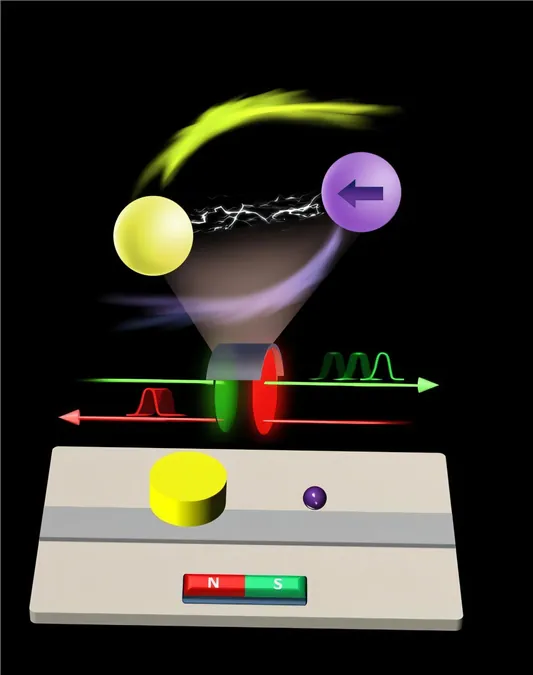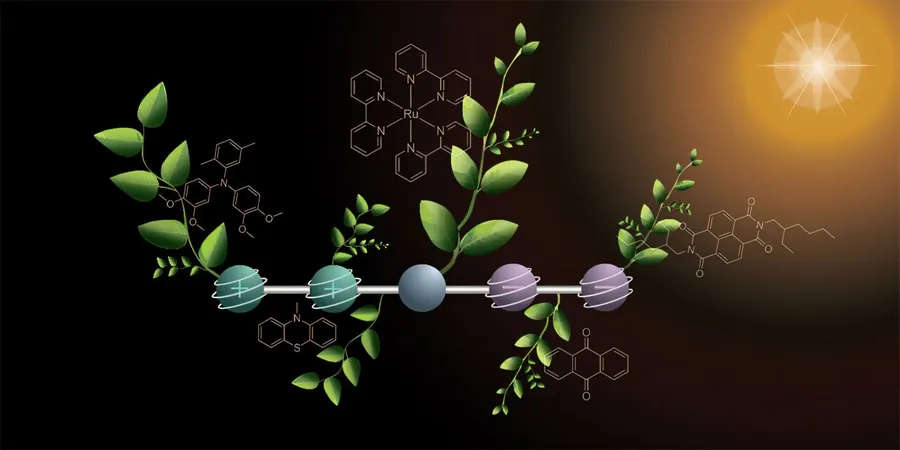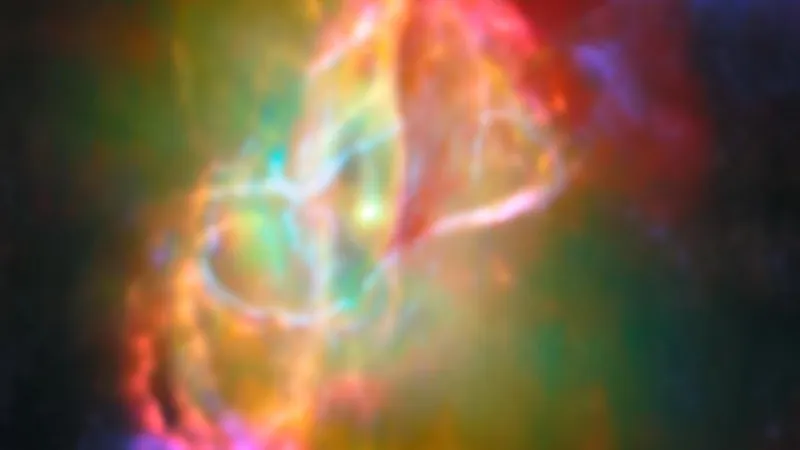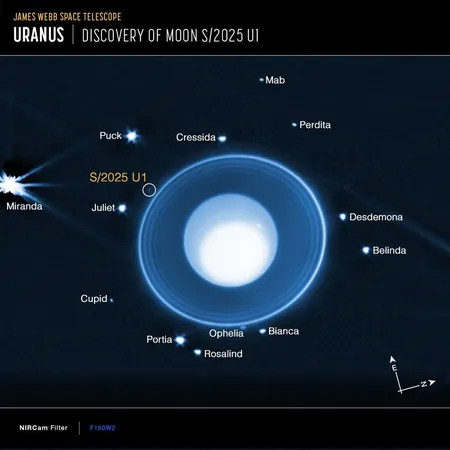
Revolutionary Breakthrough in Light Speed Control: Nonreciprocal Technology Unveiled!
2025-06-09
Author: Michael
A Game-Changer for Light Manipulation
Imagine a world where the speed of light can be controlled with precision! Researchers have unlocked this potential with a groundbreaking method that not only manipulates light speed but does so in a one-way manner—an innovation that could transform communication technologies and quantum information processing.
Unlocking Nonreciprocal Light Speed Control
Traditionally, scientists have relied on techniques like electromagnetically induced transparency (EIT) to adjust light speed, but these methods only allow light to travel at the same speed in both directions. What if it could travel faster one way and slower the other? Researchers at the University of Manitoba and Lanzhou University have achieved just that through a cutting-edge cavity magnonics device—a unique system that merges microwave photons with magnons.
The results, published in *Physical Review Letters*, suggest a new frontier for microwave communications, neuromorphic computing, and quantum circuits. This nonreciprocal approach could revolutionize signal transmission by allowing signals to flow at customized speeds in specific directions.
From Theory to Practice: The Research Journey
Leading this ambitious research is Can-Ming Hu, who previously demonstrated how to create dissipative coupling in hybrid cavity magnonic systems. The goal? To establish a system where light can move in one direction with unique properties without losing transmission quality.
Hu notes, 'Phase manipulation is crucial, as it impacts how information is conveyed. We aimed to see if we could control light phase nonreciprocally while maintaining efficient amplitude transmission.' Their experiments defied expectations, revealing nature's willingness to support this complex manipulation.
Innovative Solutions with Hybrid Systems
To achieve their objectives, the team constructed hybridized systems that leverage both dielectric resonators and the intrinsic chirality of magnetic materials like yttrium iron garnet (YIG). By harnessing these unique physical properties, they created conditions ripe for nonreciprocal light propagation.
Jiguang Yao, a key researcher in the project, explains that by integrating dissipative coupling with chirality, they achieved a controllable light propagation system that opens up endless possibilities.
Demonstrating the Unimaginable
When microwave pulses were sent through their device from opposite directions, the result was astounding: the pulses experienced delays and advances based on their direction—a first in the field! This new method could redefine the way information is processed in technologies ranging from signal communications to quantum computing.
Looking Ahead: The Future of Light Speed Technology
While the current effects are exciting, Hu admits there’s still work to be done. 'The delay and advance we achieved so far aren’t optimal. We're focused on enhancing these effects and expanding the possibilities for future applications.' With further improvements, the team aims to unlock even more potential, paving the way for technologies that were previously only dreamed of.
In summary, this remarkable achievement marks a crucial step forward in how we understand and manipulate light, promising a new era of innovations! Keep your eyes on this evolving story—who knows what incredible advancements are on the horizon?









 Brasil (PT)
Brasil (PT)
 Canada (EN)
Canada (EN)
 Chile (ES)
Chile (ES)
 Česko (CS)
Česko (CS)
 대한민국 (KO)
대한민국 (KO)
 España (ES)
España (ES)
 France (FR)
France (FR)
 Hong Kong (EN)
Hong Kong (EN)
 Italia (IT)
Italia (IT)
 日本 (JA)
日本 (JA)
 Magyarország (HU)
Magyarország (HU)
 Norge (NO)
Norge (NO)
 Polska (PL)
Polska (PL)
 Schweiz (DE)
Schweiz (DE)
 Singapore (EN)
Singapore (EN)
 Sverige (SV)
Sverige (SV)
 Suomi (FI)
Suomi (FI)
 Türkiye (TR)
Türkiye (TR)
 الإمارات العربية المتحدة (AR)
الإمارات العربية المتحدة (AR)